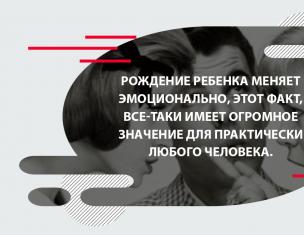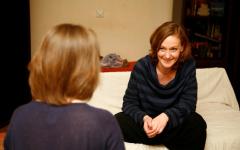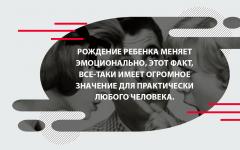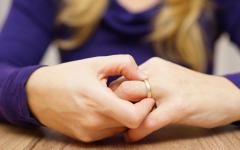Hello dear readers. I am in touch again, Tatyana Sukhikh. Today, with great pleasure, I will present an interesting topic for educators, and for children, and for their parents. Do you know what the topic is? Didn't guess? These are project topics. I think the first junior group interested in these topics. Do you agree with me dear educators and parents?
The research project is science project when it involves a set of knowledge, the purpose of which is to understand and manage nature and human activities. A research project is an engineering project when it uses scientific knowledge to create structures, devices and processes that transform natural resources into forms that meet human needs.
The journal is an important document in the development of your project. In it, you write down all the steps, doubts, difficulties, decisions and justifications. Journal entries are the basis for the project report. The diary must not be made on a computer, but notes can be made in a notebook and should only be submitted during the screening of the finalists. Find out more about what a magazine is a magazine.
So, dear friends, let's get acquainted with the literature, before moving on to a variety of topics.
Let's flip through the pages together www.book.ru and find a lot of interesting things for our project. An interesting methodological program is waiting for you. Books, games, projects for preschoolers can be found here.
Another interesting site is www.uchmag.ru, where you will find the organization of project activities for children, which is the main requirement for the Federal State Educational Standard. It provides interaction between parents and teachers in the education of children. The program can be installed via the Internet.
Once you have determined whether your project is science or engineering, you must come up with a research plan to help structure ideas before developing the research. The research plan is the initial planning for your science or engineering project, meaning it is prepared before the project starts. In it, you raise the questions to be studied, hypotheses or goals, describe the method that will be used to carry out the project, and bibliographic references on the theme of the project. Learn more about what a search plan is.
On the most interesting site UchMag from the series "To help the preschool teacher" You can purchase project notes and a design organization for preschoolers.
Didactic, plot, outdoor game is aimed at the personal formation of the child and the development of his creative, mental and social processes. By visiting the methodological site, you, teachers, educators and parents will find complex - thematic projects, which presents entertaining and Interesting games with sayings, riddles, stories and poems.
The project report is a student's written submission that should describe the facts verified in the research, the performance of the experience, and the reflection on the issues identified. This is usually accompanied by demonstrative documents such as charts, tables, graphs, statistics, and others. Learn more about what a project report is.
Finalists will be selected based on: Information Base Form, Study Plan, Project Report, Summary and Supplementary Forms when applicable. The finalists presented in Mostra are judged by the Evaluation Committee. The project includes activities, creative suggestions, tips, videos, stories, songs, souvenirs and everything you need to talk about the topic in a playful and creative way. Appreciate water as a source of life. Know the cycle of water in nature and its relation to life. Realize that your relationships are very important to the preservation of the environment.
Game projects
Topics on hygiene skills in babies
We got acquainted with the literature, now I propose to consider interesting topics. The preschool organization is characterized by an interesting and research work by profession of educators and teachers.
Dear educators and parents, you, of course, want the kids to grow up neat, smart, kind, responsive, and also want to form cultural and hygienic skills in the kids, don't you? First, I will propose two projects: the theme of small clean hands and the theme of clean hands. The time for the implementation of the first game project is 2-3 weeks, and the second cognitive, game and short-term project is 1 week. Their tasks are:
Appreciate the conservation of water as a valuable asset of nature. Appreciate life in its diversity, as well as the preservation of the environment. Understand the importance of collecting and treating water and wastewater for promoting health and maintaining health. Recognize the importance of water to the life and history of peoples, showing how water is necessary to sustain life and is critical to the organization of societies. To develop students' responsibility for environmental protection, which is not only responsible for protecting the environment, but also each of us, citizens and educators.
* proper use of soap;
* careful washing of hands and face;
* wiping dry with a towel after washing;
* use of a comb and a handkerchief;
* learning to follow appearance;
* the formation of elementary table behavior skills: the correct use of a spoon, the use of a napkin, chewing food with closed mouth, silence at the table.
Specific Goals Recognize the importance of water to our lives and to our bodies. Show negative and positive sides human actions in the environment. To make students understand that with simple gestures, you can do a lot for the environment and still save money. Methodology.
Start the project by talking to students to write down what they already know about the subject and the relationship they make with their lives. Encourage the class to participate and record students' previous knowledge of the proposed topic: Water Cycles. Begin by examining students' knowledge of the topic. What are the characteristics of the water in your cycles? How are clouds formed and why are they different? How does water get into our homes? Ask the class to see if there is a stream, river, or pond near your home or school.
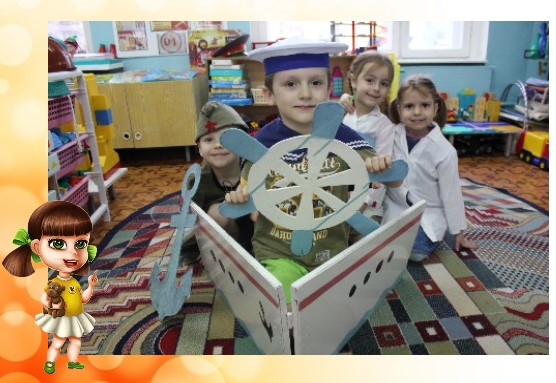
First, explain all this to the children, playing with dolls: teach them to wipe their mouths, wash the face and hands of the doll, and take care of her clothes. As a result of this project, children themselves will learn how to eat neatly, hold a spoon correctly and use a napkin.
Make hypotheses with questions about the student's prior knowledge of the topic of the lesson. Ask them to explain what they understand by showing the video. Comment on videos with scientific explanations on this subject. Work on this topic by raising students' curiosity about this topic. Work with drop puppets, illustrate a small book and draw in class. Illustrate and comment on the drawings of the story. The drop turned into steam and rose again into the sky, forming a very beautiful cloud. She was happy that she had fulfilled her mission on earth.
This project will also help them dry their face and hands with their towel and then hang it up in its place. Toddlers will begin to use handkerchiefs correctly. Personal hygiene will become a natural thing for them. And you can go on a sea voyage and learn a lot of interesting things.
Bright holiday Easter
The relevance of impressions received in childhood will remain in memory for a long time. Therefore, it is necessary to acquaint children with the history of our Motherland, culture and its holidays from early childhood. Therefore, the project of a bright Easter holiday will be a great theme for kids. The purpose of this project is to familiarize the children with the Easter holiday, with the rites, customs and its history. It is information-creative, short-term project and lasts 2 weeks. On the first preparatory stage are compiled:
History and art - a drop of the traveler. Educational Resources Graphite pencil; Colour pencils; pens; recycled material; paper; Eve; felt; white leaves; cartoons and children's stories in which drops are characters; video; music and more. camera; reinforced box and others.
Build with class panels about the need to conserve water. Keep workshops for making souvenirs for decorating and decorating the room. The room can be decorated with a few drops of paper or eva hanging from the ceiling. You can also do Cell phones about the water cycle. Water will be held in the classroom, talking about the importance of this.
- prospective action plan;
- recommendations for familiarizing kids with Orthodox culture;
- materials for classes, conversations, illustrations;
- questions with parents related to the topic.
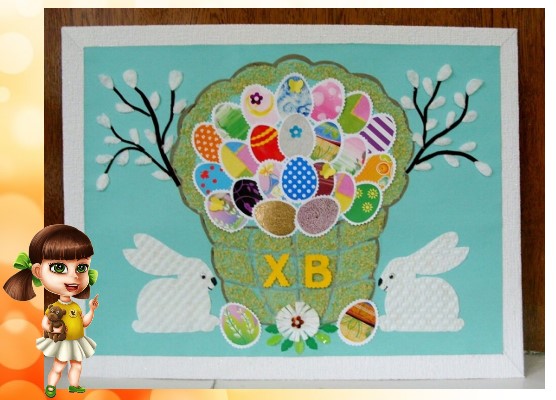
At the second stage, practical exercises are carried out:
Assess the children's knowledge of the subject before and what they know now. Could they express themselves through drawing or painting? Follow the designed activities and register interest, task completion, group participation, and content acquisition.
Charity is very important to improve the lives of people who are experiencing serious problems due to lack of assistance. But in order for this good feeling to be truly transformative, in the best possible way is the development of social projects and the implementation of social activities in the church, which meets these goals. However, there is no need to worry: ideas that can improve the lives of entire families may be easier than you think.
- with cognitive development: computer presentations "Ryaba Hen", "Easter Gingerbread Man";
- with didactic games;
- fiction: Easter stories, conversations;
- artistic creativity: modeling, drawing;
- music with bell ringing, Easter music from the box.
At the third final stage, exhibitions of interesting crafts of children and parents are organized, as well as participation in a district competition on this topic, as well as work with parents and children's creativity with them, for example, making Easter eggs.
How to start a social action in the church?
Need help with this mission? View the safe script and apply very easily in your routine we have listed below for you! The responsibility for initiating social projects is enormous. Binding to the pain of another requires psychological and rational preparation.
This is because in order to do good, it is necessary to know the social vices of your community and think about actions to combat them. With that in mind, we have listed 5 steps for initiating social action in the church. Before you take any action, practice what will make the connection with God. Pray, pray and meditate: contact you to be lighter and more sensitive to watch for help opportunities that can really make a difference in the lives of those around you.
Project "Amusement Rhymes"
The formation and development of children's speech plays an important role in personal formation child. Rhymes play an important role in the development of babies. Children, listening to simple rhymes, repetitive words, exclamatory and emotional appeals, learn to listen and repeat words.
Sound combinations that are repeated create a musical effect, with the help of which the pronunciation of sounds and the speech hearing of babies develop. Therefore, the project "Poteshki" will be very useful for kids early age. It is long-term (1 junior - 2 junior group) /
Then share information with people who attend your church. In this exercise, you will be able to see the interest they have in helping this mission. It is important to emphasize that voluntary participation is necessary for such important tasks. Consider filming needs in order to develop social project acted directly in solving the requirements in the environment of your community. It will even help to measure the effectiveness of the application of the idea. For example: low interest in reading or lack of leisure for children, teenagers and youth.
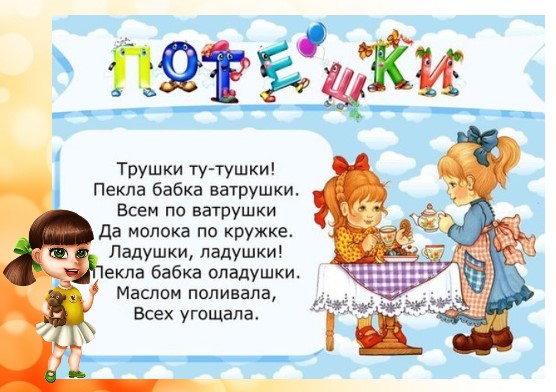
The aim of this project are:
- creating positive emotions;
- development of children's speech skills, as well as fantasy, thinking and memory.
The tasks are:
- teaching kids to listen to short nursery rhymes;
- repetition of words, phrases after the teacher;
- development of monologue and dialogue in children;
- development fine motor skills in babies;
- education of speech culture of sound.
Methods and techniques for implementation are:
With an obvious challenge, the next step is to analyze what outcomes are technically feasible and financially feasible to put into practice. Critically evaluate whether the proposed solution will actually reduce the problems listed in the previous paragraph.
A good idea and a noble goal is a great start. But for the real effectiveness of this action, also focus your energy on bringing together volunteers who can contribute to the project. Interesting idea consists in distributing simple forms in the church that ask about people's interest in social projects and their willingness to participate in them.
- reading nursery rhymes with a demonstration of paintings;
- conversations on the meaning of nursery rhymes;
- playing out the plot of nursery rhymes.
As a result, with the purposeful and systematic use of nursery rhymes, children master their native language, modeling, drawing, physical and musical development, as well as basic hygiene and self-care skills.
Despite the steps you take to get started, it's not always possible to identify problems in your community. The needs of the people are great, and if global participation is not required to fill them, the social projects that must be created can only be theoretical.
In these cases, the most appropriate is to multiply the love for the neighbor with the help of serious and reliable people who are already doing a good job for the needy. Engaging with community service initiatives through spiritual, social, and emotional care and community support is also a way of serving the community, which is one of the core functions of any church! Therefore, we will list some projects that can be part of the reality of your community, in addition to doing social activities in the church.
Ecological education of children
No less important is the upbringing of children associated with the protection of the world. At present, a loving and careful attitude to nature is very important for every person. Therefore, it is necessary to introduce children to it with younger age. I hope you agree with me, dear readers.
Therefore, for a better implementation of the tasks of environmental activities is the project activity on this topic.
The next front of action is the improvement and expansion of public or public schools. The first step should be to identify this need in your area. Next, enthusiastic donors of educational books that are in good condition. You can collect items yourself or create several collections. Control everything that was collected, delivered to the site and accountable to donors.
Another social project that usually has good recognition in churches is, for example, the promotion of cultural activities such as theater and music. You can identify professionals with skills in this area to volunteer for community outreach workshops. This opens the door to increasing youth participation in religious activities and generates interest in topics they may not have considered before!
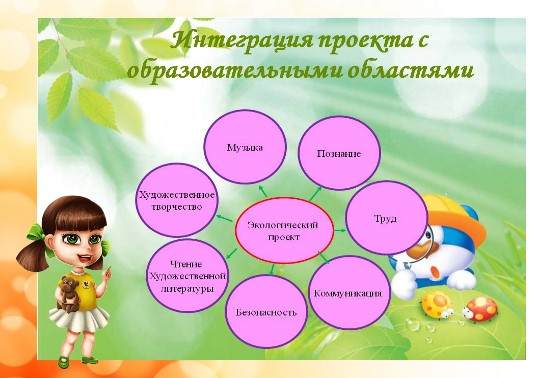
So, let's start working with the children on the topic: "Let's feed the birds." An interesting topic that will bring up a careful attitude to wildlife. This information and creative game short-term project for two weeks. The objectives of this project are:
Some churches have enough space to offer hands-on teaching lessons to people without any preparation. In this type of project, it is necessary to find volunteers to offer mini-courses in manicure, computer science, embroidery and other professional activities.
The idea is to close partnerships with professionals who are already used to projects and who are part of the social activities of your church. In addition to giving up a seat, you become responsible for organizing the agenda and promoting the initiative to reach those who really need training.
- familiarization of children with birds;
- teaching answers to questions with a short sentence;
- enrichment vocabulary on this topic;
- fostering a caring attitude towards birds.
The project can be implemented using:
- co-writing a story about feeding birds;
- outdoor game: "Car and sparrows";
- bird watching;
- memorizing a poem about a bird;
- non-traditional drawing technique;
- didactic games, for example, "Who lives in the house";
- work with parents: making feeders.
As a result, children will get acquainted with birds, and will distinguish them, learn to imitate bird voices. Children will develop compassion, responsiveness, goodwill.
You can also introduce children to the "Objects of Inanimate Nature" project and develop children's knowledge about the physical properties of the external environment, introduce them to the viscosity, flowability, buoyancy, solubility of substances, as well as the sun, air, earth, water as factors of the natural environment. This project will take two weeks.
Other events
There are also other informational and creative game projects, such as "Cat", the purpose of which is to get acquainted with a pet, in this case a cat, with its features, habits, appearance, as well as foster a caring attitude towards animals.
It will be interesting to show the children the game project "Cat's House" on the video:
Other information - creative project is "Vitamins". This topic studies the issues of maintaining the health of babies. Here are ideas about vitamins, their importance for health, about proper nutrition. This project lasts 3 weeks.
“My family” is the name of a creative long-term project. Its purpose is to give initial ideas about the family. The tasks are to evoke positive emotions about the family, develop an expression of tenderness, joy, and cultivate respect for parents. I suggest watching a video on this topic with little friends:
Since preschoolers love to explore everything and put it into practice, there is such a cognitive - research, group event "Magic Drop", the purpose of which is to consolidate existing knowledge about water. The tasks are to familiarize the kids with the properties of water, support the children's initiative, ingenuity and encourage friendly relations during the study period. The project lasts 2 weeks. It is short term.
The event, the work plan for the master class, is also interesting, where creative tasks are offered for parents, organization of competitions, participation in project activities aimed at developing children's abilities and promoting trusting relationships between the family and the kindergarten.
So, summarizing, I come to the conclusion that interesting topics in kindergartens will help develop the intellectual and physical development of kids. Therefore, let's together, dear teachers, educators, parents, make every effort so that our children grow up healthy.
I hope that with this article I helped you make plans for events in kindergartens and other preschool institutions. I say goodbye to you, but not for long. Stay tuned for other interesting and informative articles. And if you have any questions, be sure to ask. I will gladly answer them. Share the article with your friends, and by subscribing to my blog updates, you will learn a lot of interesting things.

Sincerely, Tatyana Sukhikh! Till tomorrow!
Plan
1. Project activity.
1.1. Activity. Project activity.
1.2. Project. Typology of projects.
2. Theoretical aspects of design.
2.1. Principles of construction and design of individual educational programs (projects).
2.2. Modeling. Design.
3. Organization of project activities.
3.1. Difficulties in design.
3.2. Stages of work on the project.
3.3. Activities at various stages of design.
4. Topics of projects.
5. Thesaurus.
6. Workshop.
Project activity
One of the fundamental characteristics of modern man, acting in the space of culture, is his ability to projective activity.
Projective (or project) activity belongs to the category of innovative, as it involves the transformation of reality, is built on the basis of appropriate technology that can be unified, mastered and improved. The relevance of mastering the basics of design is due, firstly, to the fact that this technology has a wide scope at all levels of the organization of the education system. Secondly, mastering the logic and technology of socio-cultural design will allow more efficient implementation of analytical, organizational and managerial functions. Thirdly, design technologies ensure the competitiveness of a specialist.
Activity. Project activity
Activity- a specific human form of relation to the world around, the content of which is an expedient change and transformation in the interests of people; condition for the existence of society. Activity includes the goal, means, result and the process itself.
Project activities include:
problem analysis;
goal setting;
choice of means to achieve it;
search and processing of information, its analysis and synthesis;
evaluation of the obtained results and conclusions.
Subject activity consists of three blocks: subject, activity and communicative.
Project activity students is one of the methods of developmental education, aimed at developing independent research skills (problem posing, collecting and processing information, conducting experiments, analyzing the results), contributes to the development of creative abilities and logical thinking, combines the knowledge gained during educational process and attaches to specific vital problems.
The purpose of the project activity is understanding and application by students of knowledge, skills and abilities acquired in the study of various subjects (on an integration basis).
Tasks of project activity:
Learning to plan (the student must be able to clearly define the goal, describe the main steps to achieve the goal, concentrate on achieving the goal throughout the work);
Formation of skills for collecting and processing information, materials (the student must be able to choose the appropriate information and use it correctly);
Ability to analyze (creativity and critical thinking);
Ability to write a written report (the student must be able to draw up a work plan, present information clearly, draw up footnotes, have an understanding of the bibliography);
To form a positive attitude towards work (the student must show initiative, enthusiasm, try to complete the work on time in accordance with the established work plan and schedule).
Principles of organizing project activities:
The project must be feasible to carry out;
Create the necessary conditions for the successful implementation of projects (to form an appropriate library, media library, etc.);
To prepare students for the implementation of projects (conducting a special orientation so that students have time to choose a project topic, at this stage students with experience in project activities can be involved);
Provide project management by teachers - discussion of the chosen topic, work plan (including execution time) and keeping a diary in which the student makes appropriate notes of his thoughts, ideas, feelings - reflection. The diary should help the student write a report if the project is not a written work. The student uses the diary during interviews with the project manager.
In the event that the project is a group one, each student must clearly show his contribution to the project. Each project participant receives an individual assessment.
Mandatory presentation of the results of the project in one form or another.
Important design factors include:
increasing the motivation of students in solving problems;
development of creative abilities;
a shift in emphasis from an instrumental approach in solving problems to a technological one;
developing a sense of responsibility;
creating conditions for a collaborative relationship between teacher and student.
The increase in motivation and the development of creative abilities is due to the presence in the project activity of a key feature - independent choice.
The development of creative abilities and a shift in emphasis from an instrumental approach to a technological one occurs due to the need for a meaningful choice of tools and planning activities to achieve the best result. The formation of a sense of responsibility occurs subconsciously: the student seeks to prove, first of all, to himself that he made the right choice. It should be noted that the desire to assert itself is the main factor in the effectiveness of project activities. When solving practical problems, a relationship of cooperation with the teacher naturally arises, since for both the task is of substantive interest and stimulates the desire for an effective solution. This is especially evident in those tasks that the student himself was able to formulate.
Project. Project typology
Project(from lat. projectus, letters - thrown forward):
1) a set of documents (calculations, drawings, etc.) for the creation of any structure or product.
2) The preliminary text of any document.
3) Idea, plan.
The project method is not fundamentally new in world pedagogy. It originated at the beginning of this century in the United States. It was also called the method of problems and it was associated with the ideas of the humanistic direction in philosophy and education, developed by the American philosopher and teacher J. Dewey, as well as his student V.Kh. Kilpatrick. J. Dewey proposed to build learning on an active basis, through the expedient activity of the student, in accordance with his personal interest in this particular knowledge. Hence, it was extremely important to show the children their personal interest in the acquired knowledge, which can and should be useful to them in life.
This requires a problem taken from real life, familiar and meaningful to the child, for the solution of which he needs to apply the acquired knowledge, new knowledge that has yet to be acquired. The teacher can suggest sources of information, or can simply direct the students' thoughts in the right direction for independent search. But as a result, students must solve the problem independently and in joint efforts, applying the necessary knowledge, sometimes from different areas, to get a real and tangible result. All work on the problem, thus, acquires the contours of project activity. Of course, over time, the idea of the project method has undergone some evolution. Born from the idea of free education, it is now becoming an integrated component of a well-developed and structured education system. But its essence remains the same - to stimulate students' interest in certain problems, involving the possession of a certain amount of knowledge and through project activities, providing for the solution of these problems, the ability to practically apply the knowledge gained, the development of reflex (in the terminology of John Dewey or critical thinking).
The essence of reflex thinking is the eternal search for facts, their analysis, reflections on their reliability, the logical alignment of facts to learn new things, to find a way out of doubt, the formation of confidence based on reasoned reasoning. The project method attracted the attention of Russian teachers as early as the beginning of the 20th century. The ideas of project-based learning arose in Russia almost in parallel with the developments of American teachers. Under the guidance of the Russian teacher S.T. Shatsky in 1905, a small group of employees was organized, who tried to actively use project methods in teaching practice. However, in a foreign school, he actively and very successfully developed. In the USA, Great Britain, Belgium, Israel, Finland, Germany, Italy, Brazil, the Netherlands and many other countries, where the ideas of a humanistic approach to education by J. Dewey, his method of projects have found wide distribution and gained great popularity due to the rational combination of theoretical knowledge and their practical application for solving specific problems of the surrounding reality in the joint activities of schoolchildren. “Everything that I learn, I know why I need it and where and how I can apply this knowledge” - this is the main thesis of the modern understanding of the project method, which attracts many educational systems seeking to find a reasonable balance between academic knowledge and pragmatic knowledge. skills. The project method is based on the development of students' cognitive skills, the ability to independently construct their knowledge, the ability to navigate in the information space, the development of critical and creative thinking.
Project method - this is from the field of didactics, private methods, if it is used within a particular subject.
Method is a didactic category. This is a set of techniques, operations for mastering a certain area of practical or theoretical knowledge, a particular activity. This is the way of cognition, a way of organizing the process of cognition. Therefore, if we are talking about project method, we mean precisely way achieving a didactic goal through a detailed development of the problem (technology), which should end in a very real, tangible bottom line formatted in one way or another. Didactic teachers turned to this method to solve their didactic tasks. The project method is based on the idea that is the essence of the concept of "project", its pragmatic focus on the result that can be obtained by solving one or another practically or theoretically significant problem. This result can be seen, comprehended, applied in real practice.
To achieve this result, it is necessary to teach children or adult students to think independently, find and solve problems, attracting for this purpose knowledge from different areas, the ability to predict the results and possible consequences of different solutions, the ability to establish cause-and-effect relationships.
The project method is always focused on the independent activity of students - individual, pair, group, which students perform for a certain period of time.
This method is organically combined with group (collaborative or cooperative learning) methods. The project method always involves solving a problem. The solution of the problem involves, on the one hand, the use of a set, various methods, teaching aids, and on the other hand, it implies the need to integrate knowledge, the ability to apply knowledge from various fields of science, engineering, technology, and creative fields. The method of projects as a pedagogical technology involves a combination of research, search, problem methods, creative in their very essence.
Basic requirements for using the project method:
1. The presence of a problem/task that is significant in research, creative terms, requiring integrated knowledge, research search for its solution (for example, studying the demographic problem in different regions of the world; creating a series of reports from different parts of the globe on one problem; the problem of the impact of acid rain on environment, etc.).
The practical, theoretical, cognitive significance of the expected results (for example, a report to the relevant services on the demographic state of a given region, factors affecting this state, trends that can be traced in the development of this problem; joint publication of a newspaper, an almanac with reports from the scene; forest protection in different localities, action plan, etc.);
Independent (individual, pair, group) activities of students.
Structuring the content of the project (indicating the phased results).
The use of research methods that provide for a certain sequence of actions:
definition of the problem and the research tasks arising from it (using the method of "brainstorming", "round table" in the course of joint research);
putting forward hypotheses for their solution;
discussion of research methods (statistical methods, experimental methods, observations, etc.);
discussion of ways to design the final results (presentations, protection, creative reports, views, etc.).
collection, systematization and analysis of the obtained data;
Summing up, registration of results, their presentation;
conclusions, promotion of new research problems.
For the typology of projects, the following typological features:
Dominant activity in the project: research, search, creative, role-playing, applied (practice-oriented), fact-finding, etc. (research project, game, practice-oriented, creative);
Subject area: mono project (within one field of knowledge); interdisciplinary project.
Nature of Project Coordination: direct (hard, flexible), hidden (implicit, simulating a project participant, typical for telecommunications projects).
X nature of contacts(among participants in the same school, class, city, region, country, different countries peace).
The number of project participants.
Project duration.
The implementation of the project method and the research method in practice leads to a change in the position of the teacher. From a carrier of ready-made knowledge, he turns into an organizer of the cognitive, research activities of his students. The psychological climate in the classroom is also changing, as the teacher has to reorient his teaching and upbringing work and the work of students on various types of independent activities of students, on the priority of activities of a research, search, and creative nature.
Separately, it should be said about the need to organize an external evaluation of projects, since only in this way can their effectiveness, failures, and the need for timely correction be monitored. The nature of this assessment depends to a large extent on the type of project, and on the topic of the project (its content), and the conditions for conducting it. If this is a research project, then it inevitably includes stages of implementation, and the success of the entire project largely depends on properly organized work at individual stages.
You should also stop at general approaches to project structuring:
You should always start with choosing a project topic, its type, and the number of participants.
Next, the teacher needs to think about possible options for problems that are important to explore within the framework of the intended topic. The problems themselves are put forward by students at the suggestion of the teacher (leading questions, situations that contribute to the definition of problems, a video sequence with the same purpose, etc.). Brainstorming followed by a group discussion is appropriate here.
Distribution of tasks into groups, discussion of possible research methods, information search, creative solutions.
Independent work of project participants on their individual or group research, creative tasks.
Intermediate discussions of the data obtained in groups (at lessons or in the classroom in a scientific society, in group work in a library, media library, etc.).
Protection of projects, opposition.
Collective discussion, expertise, results of external evaluation, conclusions.




